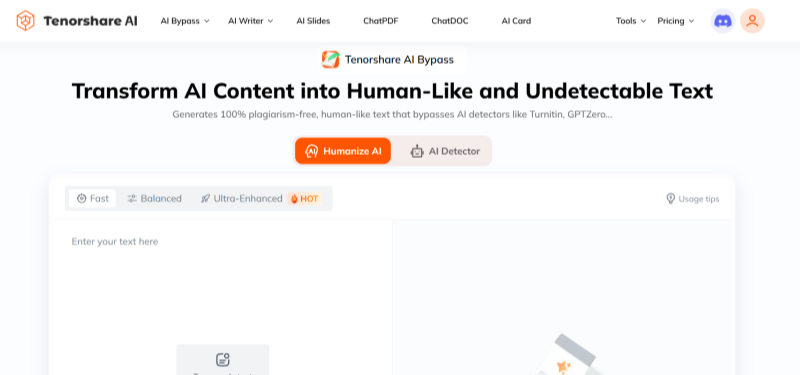How to Write a Conclusion for a Research Paper: Effective Tips
The conclusion of the research paper is an important section that plays a major role in the impact and effect of the entire research paper. However, it is also a section that gets less attention than preface and body. The conclusion serves to summarize important discoveries, their significance and suggestions, and conclude research. In this article we are going to learn how to write a conclusion for a research paper:
Part 1: What is the conclusion of the research paper
The conclusion of a research paper should summarize the key points of the paper and make it easier for the reader to understand the context. The conclusion of the research paper is a great opportunity for the author to reaffirm his point and connect all the information. Overall, it is one of the most important parts of writing research papers.
The conclusion of a research paper is generally one paragraph long, but for more complex themes it can be a longer conclusion. For guidance on crafting such summaries, consider exploring AI Essay Writer Tools or learning How to Use OpenAI's New GPT-4o for efficient and effective writing.
Pat 2: 6 elements to include in the conclusion of the research paper
1 Urgency or Result
The excellent conclusion is: "Why should readers be interested? Point out why your topic is important to the reader to connect information to the reader. What happens if the problem continues and how can we solve it? Please be free to mention the common failures that cause problems, the implications of data, or recommended actions for problem solving.
2 Summary of papers
The paper's conclusion is a great place to reconfirm the first thesis statement, which summarizes the major topics and issues covered in the paper. The thesis statement is discussed at the beginning of the paper, but it becomes more powerful by presenting all the evidence and then introducing it again at the end.
3 Summary of key points
I want to avoid repetition, but it is helpful to the reader to summarize the points. Think of this as an "important point" in your paper and the part you want your readers to remember. The details are left in the body and the conclusions should be used to remind the reader of your most powerful evidence before placing the paper.
4 Similarity to Introduction
The preface and conclusion are two sides together. A useful strategy to consider when writing a research paper's conclusions is to follow the same structure as the introduction or to take up the same theme. For example, if you cast a question in the preface, you can answer the question directly at the conclusion.
5 Research Limits
This does not apply to all research papers, but when you write about the exam or research you have done, there are ethical requirements for what you write in the conclusion of your research paper. Specifically, it is necessary to mention the limits of research. This includes criticisms and process flaws that may have affected the results, such as the use of non-optimal participating groups.
6 Conciseness
Above all, the conclusions of all research papers should be written concisely. In general, the conclusions should be short, so be careful about the number of characters and aim for as simple a sentence as possible. You can explain the topic in detail in the body of the paper, but the conclusion is for summary and summary.
Part 3: What to Avoid in Your Conclusion?
Generic Phrases
Avoid starting with phrases like “In conclusion” or “In summary.” Readers already know it’s the conclusion.
Adding New Information
Don’t introduce new ideas or data here. Stick to what’s already discussed in the paper.
Lengthy Discussions
Keep it short and focused. Avoid detailed explanations of methods or results.
Apologizing
Don’t undermine your work by expressing doubts or apologizing for any perceived shortcomings.
Emotional Appeals
Stay analytical and avoid sentimental language to maintain the paper’s professional tone.
How AI Can Assist in Writing a Research Paper Conclusion?
Artificial Intelligence (AI) has become an invaluable tool for researchers and students when drafting conclusions for research papers. By leveraging AI, writers can enhance the clarity, structure, and impact of their conclusions. Here’s how AI can help to how to write a conclusion for a research paper:
- Summarizing Key Points: AI tools can scan your research and extract essential ideas, making it easier to craft a concise summary.
- Improving Language and Tone: AI can refine language, ensuring a professional tone while avoiding redundancy or overly complex sentences.
- Offering Structural Suggestions: Many AI tools provide templates and guidelines for creating a structured conclusion.
- Ensuring Consistency: AI tools can cross-check the conclusion with your introduction and body for consistency in arguments and themes.
- Addressing Research Gaps: AI can help identify areas where additional clarity or emphasis may be needed in the conclusion.
Make AI-Generated Content Human with Tenorshare AI Bypass
When writing research conclusions or any content, it’s essential to maintain a human, authentic touch. Tenorshare AI Bypass is designed to remove AI-generated markers, ensuring your content resonates naturally. It refines AI-written text to meet authenticity standards while retaining its effectiveness. With easy integration and support for multiple formats, it’s a reliable choice for researchers, students, and professionals. Say goodbye to robotic writing and hello to authentic communication with Tenorshare AI Bypass.

Features of Tenorshare AI Bypass:
- Natural Tone Conversion: Turns AI-driven text into human-like language.
- Authenticity Assurance: Enhances trustworthiness by passing AI detection.
- Quick and Seamless: Provides fast results with an easy-to-use interface.
- Broad Compatibility: Works with various formats, including academic and creative content.
- Preserves Meaning: Retains the original intent and clarity of the content.
- Perfect for Professionals: Ideal for ensuring polished, human-authentic documents.
FAQs
What is the purpose of a conclusion in a research paper?
The conclusion summarizes the key points, reaffirms the thesis, and connects findings to real-world applications or policy implications.
Can I introduce new data in the conclusion?
No, new data or information should not be included. The conclusion should focus on summarizing and reaffirming the paper’s content.
What are common mistakes to avoid in a conclusion?
Avoid using generic phrases, introducing new ideas, lengthy discussions, and apologetic tones. Keep it concise and professional.
Conclusion
Writing an effective research paper conclusion is vital to leave a lasting impression on readers. In this article you have learned the how to write a conclusion for a research paper. For those who use AI tools to draft conclusions, maintaining a natural and authentic tone is crucial. This is where Tenorshare AI Bypass can help.Tenorshare AI Bypass transforms AI-generated content into natural, human-like language. It ensures your writing is authentic, professional, and meets high-quality standards.
You Might Also Like
- Do Companies Use AI Detectors for Checking Your Cover Letters? - Bypass AI Detection Tips
- Tenorshare AI Bypass: Comprehensive Review, Features, Pros and Cons
- How to Bypass ZeroGPT for Free? Best Solutions!
- Bypassgpt.AI Humanizer Review: Features, Effectiveness, Pros, Cons
- Bypassai.AI Review: Is It Legit & Reliable?
- AI Detector Score Meaning: How to Interpret and Bypass Detection

